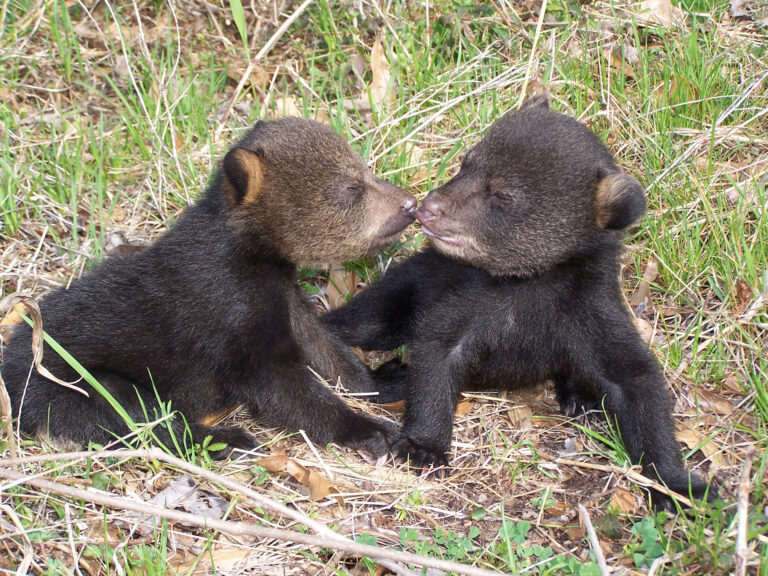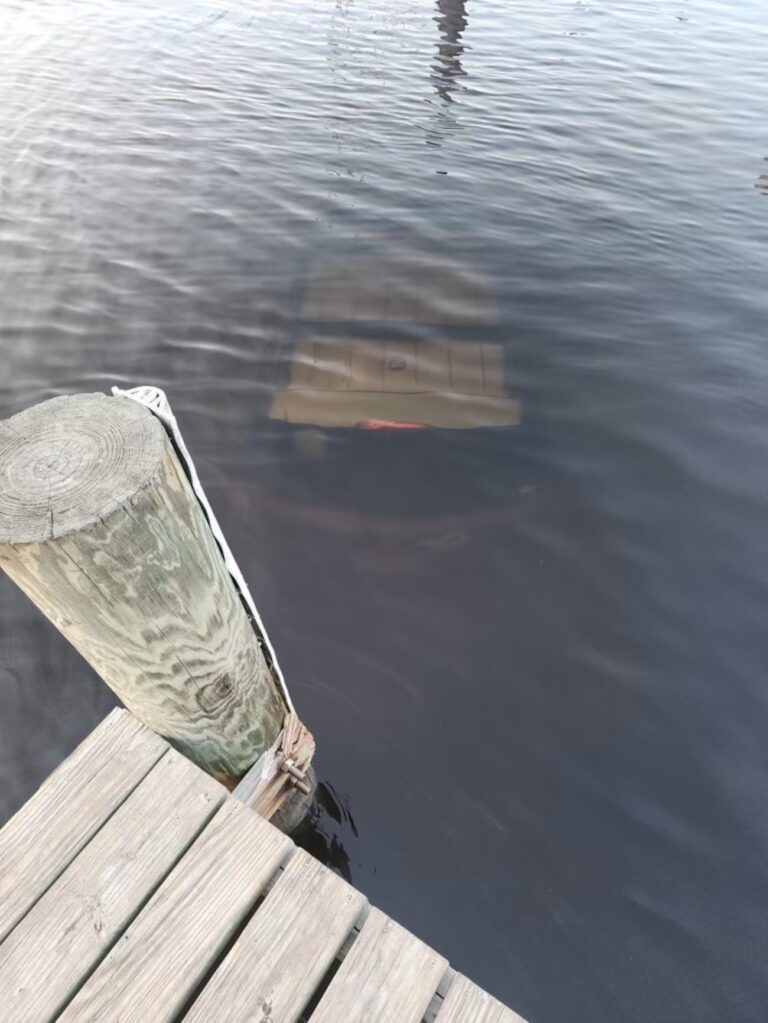Legacy Post Disclaimer
This is a #Legacy post imported from The Apalachicola Time’s previous platform. If you’re experiencing issues with this article, please email us at news@nevespublishing.com.
Manatee deaths surfacing around Carrabelle
A Carrabelle woman whose husband discovered a dead manatee near their dock along the Carrabelle River is sounding the alarm that boaters need to slow down.
Christina Saunders, who together with husband Timothy own about 2,000 feet of riverfront off Three Rivers Road, said that two weeks ago, on the morning of Wednesday, March 17, her husband discovered a manatee, deceased, with evidence of gashes likely made by a boat propeller.
“It was clearly dead, it had probably been in the area for a while,” she said. “He didn’t smell very good, I can tell you that.”
Tim Saunders wrapped a rope around the manatee’s tail so it wouldn’t float off, and would be there when an officer from the Florida Fish and Wildlife Conservation Commission would arrive to carry it off.
“My husband secured it so it wouldn’t float away,” she said. “We didn’t want it lying underneath our dock. It was over five feet long, it was a big one.”
A later determination by FWC was that the animal was a male, 240 centimeters long, which is nearly eight feet.
“There’s a family that likes to eat algae from the bottom of the floating concrete dock,” said Christina Saunders. “They’ve been in the area for quite a while. We have a rock revetment that collects moss and algae, and when we’re washing our boat, they come up and drink the water. My husband sees them occasionally in the morning and evening.”
Whether the slow-moving manatee was killed by a boat propeller, or whether its already lifeless body was struck later by a watercraft, will never be determined, as FWC did not perform a necropsy on the decomposing carcass.
“FWC manatee biologists verify and record the location of all reported manatee carcasses. Depending on the condition and current circumstances, staff collect biological information and samples, and may perform a necropsy to determine cause of death,” wrote FWC spokeswoman Kelly Richmond, in an email.
“Staff often leave carcasses in areas to decompose naturally as it is a source of food for many other species and beneficial to the environment,” Richmond wrote. “Due to the state of decomposition, only external workup was completed for the manatee in the Carrabelle River.”
Dr. Martine de Wit, an FWC veterinarian who oversees manatee necropsies, said that in areas that are remote, it’s “hard to get to carcasses quick enough, and they’re already in an advanced stage of decomposition, so it doesn’t seem worth it. In the end you can’t know the cause of death.”
A survey of FWC mortality for 2021 shows that the Saunders manatee is the third such death since the start of the year, a brisk pace ahead of any year since 1974, when data began being recorded.
On Jan. 5, an even larger male, over 9.5 feet long, was found in the New River, and on Jan. 25, an eight-foot male was discovered in the Carrabelle River.
In 2020, records show that there were six dead manatees reported in Franklin, one of which was a perinatal death, meaning it was a small calf, under five feet. “It was maybe a couple months old,” said de Wit.
Because the records are based on “opportunistic data collection,” meaning the reporting is voluntary and based on observable data, they provide a valuable, but limited, understanding of the extent of manatee deaths, she said.
“We do not know how many manatees are out there alive,” de Wit said. “We miss carcasses. We do not know a mortality rate because for that you have to know the exact number (there are alive) and the exact number that died, and both are unknown.
“We’re looking at trends over time,” she said.
The data shows there were no reports in 2019 in Franklin County, and three in 2018, including two determined to have died from cold stress and one that was unrecovered.
de Wit said manatees migrate to evade cold waters, since prolonged exposures to temperatures below 68 degrees can be deadly. “There’s also the possibility of acute hypothermia,” she said.
The number of reported deaths in Franklin County prior to 2018 is limited, according to the data. There were none between 2015 and 2017, one in 2014, which was unrecovered; two in 2013, one of cold stress and one unrecovered; one unrecovered in 2012; and one each in 2010 and 2011, both by watercraft.
There were none in 2009, one by cold stress in 2008, one unrecovered in 2007, and none between 2004 and 2006. In 2003, there were two deaths, one by cold stress and one undetermined, and in 2002, one by cold stress. No deaths were reported in 1999 and 2000, in 1998 there was one undetermined death, and none in 1996 and 1997.
In 1995 there was one undetermined manatee death, none between 1991 and 1994, and in 1990, one identified as “other human” and in 1989 one undetermined. There were none dating back to 1974, according to the FWC data.
de Wit said “other human” refers to deaths not caused by blunt force trauma from watercraft. “It could be from water control structure floodgates, or canal locks,” she said. “It could be trapped behind a human barrier, or it could ingest fishing line or hooks or other manmade material that caused some disease.”
Saunders said she believes a growth of boats in the area has contributed to this spike in manatee deaths, and she’s working to better publicize a slow wake zone for the area.
“It’s frustrating for us down here,” she said. “I want to see if we can’t get something started. We have been trying to get the marine patrol to put up slow wake zone signs.
“There are more boats ever since they paved River Road, and more and more people are buying homes,” she said. “And these are big boats, 25- and 30-foot center consoles with two or three motors on them.
“We just want them to slow down,” Saunders said.
She said she has checked with Carrabelle city officials, and plans to speak with County Commissioner Jessica Ward to see what can be done. One problem that must be overcome is that municipal officials are limited in what they can do to police state waters.
“The problem’s been getting out of hand for lots of summers,” Saunders. “They (state officials) are aware of that area of the river.”
Saunders said she has arranged to secure warning signs from the Save the Manatee organization, which is sending her some.
Richmond said manatee signage is available through FWC’s Habitat and Species Conservation Department, which can be reached at 850-488-3831.
de Wit said that people who witness a dead or injured manatee are invited to call 888-404-3922 to report it to FWC.
“If starts with awareness,” said the veterinarian. “We want to start creating that awareness.”
This article originally appeared on The Apalachicola Times: Manatee deaths surfacing around Carrabelle





Meet the Editor
David Adlerstein, The Apalachicola Times’ digital editor, started with the news outlet in January 2002 as a reporter.
Prior to then, David Adlerstein began as a newspaperman with a small Boston weekly, after graduating magna cum laude from Brandeis University in Waltham, Massachusetts. He later edited the weekly Bellville Times, and as business reporter for the daily Marion Star, both not far from his hometown of Columbus, Ohio.
In 1995, he moved to South Florida, and worked as a business reporter and editor of Medical Business newspaper. In Jan. 2002, he began with the Apalachicola Times, first as reporter and later as editor, and in Oct. 2020, also began editing the Port St. Joe Star.